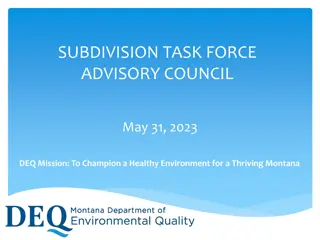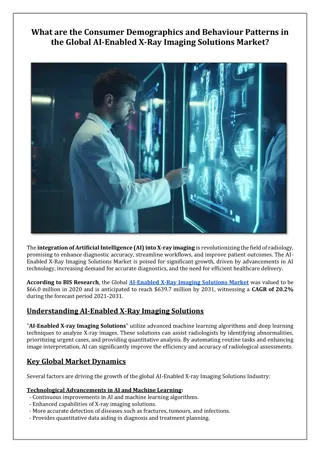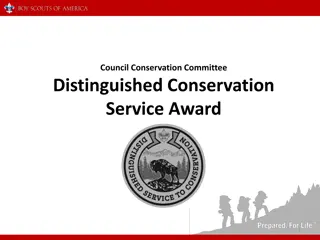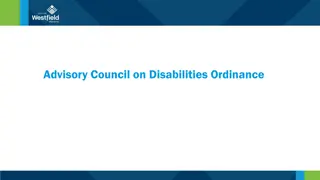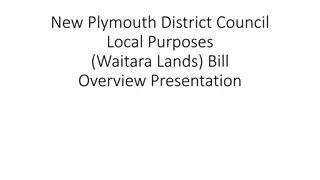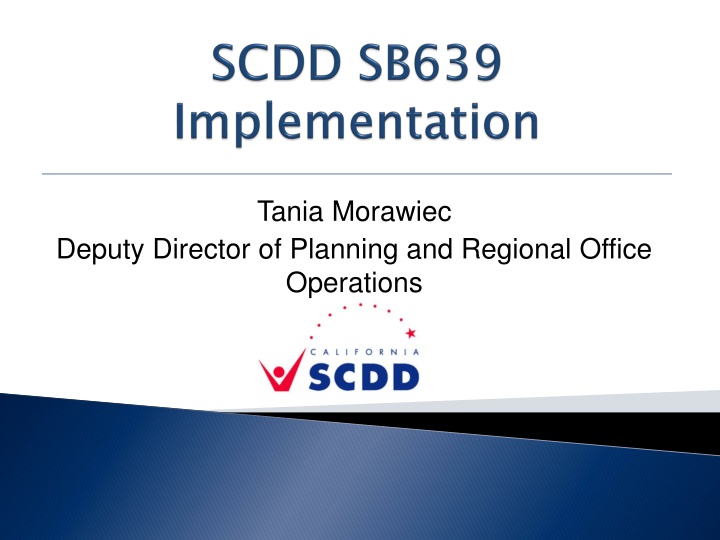
Improving Competitive Integrated Employment for Workers with Disabilities in California
California is phasing out subminimum wages for workers with intellectual and developmental disabilities to promote Competitive Integrated Employment. Learn about the key initiatives, data collection requirements, and outcomes related to this important transition.
Download Presentation

Please find below an Image/Link to download the presentation.
The content on the website is provided AS IS for your information and personal use only. It may not be sold, licensed, or shared on other websites without obtaining consent from the author. If you encounter any issues during the download, it is possible that the publisher has removed the file from their server.
You are allowed to download the files provided on this website for personal or commercial use, subject to the condition that they are used lawfully. All files are the property of their respective owners.
The content on the website is provided AS IS for your information and personal use only. It may not be sold, licensed, or shared on other websites without obtaining consent from the author.
E N D
Presentation Transcript
Tania Morawiec Deputy Director of Planning and Regional Office Operations
Governor Newsom signed Senate Bill 639 (Chapter 339; Statutes of 2021), phasing out subminimum wages for workers with intellectual and/or developmental disabilities (I/DD) As an Employment First state, it is our collective responsibility to establish clear paths to Competitive Integrated Employment (CIE) With the passage of SB 639, California is poised to significantly improve the working independence of members of the IDD community
Report Due January 2023, phase out by 2025: Planned benchmarks developed to achieve the outcomes of the 14-c phase out plan. Recommendations for funding levels or other resources necessary to implement the plan.
Outreach and follow up for each employee with a disability who is being paid less than the minimum wage employee s wages are brought up to the minimum wage. This outreach and follow-up may include consultation with members of the employee s hiring or service coordination team, as appropriate. Outreach and follow up for each employee with a disability who is being paid less than the minimum wage to ensure that the
Data collection and reporting requirements to track the following outcomes of employees with disabilities who transition out of subminimum wage employment: Total number of individuals with disabilities who are employed and paid subminimum wage. Employment rates. The number of individuals who were participating in a subminimum wage position that are not participating in job search activities. The number of individuals who move from subminimum wage positions to nonpaying activities. The number of individuals who move from subminimum wage positions to positions that are paid at or above minimum wage. Data collection and reporting requirements to track the following outcomes of employees with disabilities who transition out of subminimum wage employment:
According to DOR data from September 2022: 80 14-c certificate holders exist 6087 14-c participants exist
It is not enough to create incentives, a state must disincentivize service options that do not lead to CIE Braided funding and interagency collaboration is key to success PWD & families must be involved in planning
There is a need for stronger interagency collaboration possibly involving formal MOUs between and among groups such as DDS, DOR, the Workforce system, and the Regional Service Centers.
EFC WIPA DRC CECD IACA ACSED DOR DAC SRC PWD DDS Employment Workgroup UCEDs QI CCEPD Workgroup LWB CDE RCs WDB AJCs APSE
EFC DOR & CCEPD DRC, BBBS DDS Employment Workgroup WIOA, Workforce Boards Providers
Demand Change Among Target Populations Development of Evidence-Based Practices & Evolution of Models in Service Delivery Advancements in Legal/Policy Landscape Maximizing Efficiencies thru Goal Alignment & Resource Coordination Demonstrated Improvements in Desired Outcomes via rigorous Performance Measurement
3.Advancements in Legal/Policy Landscape 2. 5. Development of Evidence- Based Practices & Evolution of Models in Service Delivery Demonstrated Improvements in Desired Outcomes via rigorous Performance Measurement 4. Maximizing Efficiencies thru Goal Alignment & Resource Coordination 1. Demand Change among Target Populations 3.Advancemen ts in Legal/Policy Landscape
Regional Variance/RC System-California has a well-established model of regional control for service interventions. If it is state policy policy should not be contravened under the guise of local control. Presumably executive and legislative systems of state authority hold sway over service policies even if those policies get delivered through a network of private, nonprofit entities. state policy to focus on CIE, such a
Expansion of the State as a Model Employer effort Focus on upskilling and certification for direct employment service staff Increased use of DB101 throughout the state Information options in different languages including ASL, culturally informed services
Develop several pilot projects, track and share outcomes/lessons learned Specific focus on transitioning youth from sub minimum wage into CIE planning Create an understanding that career development, self-employment, and wage progression are two crucial elements of successful CIE
Consistent use of definitions and application, i.e. what code gets used for what type of intervention across the state Method and amounts rate service providers receive for employment services should reflect SB639 expectations, i.e., adequate compensation for incentivizing and achieving CIE/ SB639 goals. Note: There is no one payment model that other states have used in a way that is totally applicable to the California environment, but the state should examine these data from other locations to see what fits for areas within California
Explore an acuity-based payment structure to ensure that job seekers who have high support needs are served State should create a structure (a person or larger organizational entity) of overall monitoring towards the SB639 goals that is external to and transcends individual public agencies State should create a cross-agency data sharing system that collects important outcome and service data related to CIE and SB639
DDS and the CHHS should fund a time limited (4/1/2023 - 1/1/2026) statewide TA Center with regionalized staff (broader regions than the 21 Regional Center service areas (perhaps 6-7 to cover the state) Develop/provide/ contract for statewide and regional trainings on the various models and approaches that might successfully assist people with IDD achieve competitive integrated employment at prevailing wages.
A transportation gap analysis/ problem solving exercise is needed to understand transportation access barriers and possible solutions to those barriers for individuals in 14(c). California s regional diversity presents unique challenges for those in urban areas, and distinctly different challenges in rural areas. Stakeholder group recommends conducting a needs assessment to better understand these issues and identify potential solutions appropriate and effective for one s region, level of support needs, and employment goals.
Core Stakeholder Group Community Conversations Letter Writing Campaign To optimize outreach and facilitate solutions, SCDD is also hosting a letter writing campaign. We will include the letters as an appendix to the statutorily required report. Core Stakeholder Group Community Conversations Letter Writing Campaign- -




